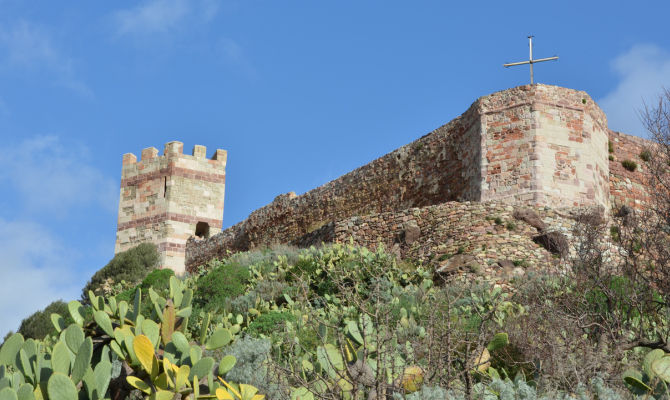
**SANTU JUANNE in Sardinia**
Thread about the festivity of Saint John (24th of June) and summer solstice in Sardinia: divination and the ritual of "companionship". #FolkloreThursday #Folklore #SardinianFolklore #Sardinia #Sardegna San Giovanni
Thread about the festivity of Saint John (24th of June) and summer solstice in Sardinia: divination and the ritual of "companionship". #FolkloreThursday #Folklore #SardinianFolklore #Sardinia #Sardegna San Giovanni

Saint John (Santu Juanne) falls by Christian tradition on the 24th of June. It's not a casual day, in fact it's very close to the summer solstice, usually celebrated by many ancient cultures.
In Sardinia this is a very traditional festivity, which still holds clear its pagan-
In Sardinia this is a very traditional festivity, which still holds clear its pagan-
-roots. The festival is linked to fires and water. In some places (Cuglieri, Bono, for example), we have the rite of s'abba muda. Whoever wants to ask for some grace from the Saint has to go from the church to the fountain in complete silence. Once there, they drink water and-
-come back, still in silence and still walking along the side of the road. In some places, they offer water to passersby, always without speaking because otherwise they have to start again.
In Cuglieri, it's thought the fountain (outside town) is of Nuragic origins. We don't -

In Cuglieri, it's thought the fountain (outside town) is of Nuragic origins. We don't -


-know for sure but we know Ancient Sardinians had a close relationship with water.
Another practice is the divination by reading leaves. Girls who wanted to know their future husband would tie some leaves of the so-called frori (=flower) of Santu Juanne and according to which-
Another practice is the divination by reading leaves. Girls who wanted to know their future husband would tie some leaves of the so-called frori (=flower) of Santu Juanne and according to which-
-bug was inside, they would know the job of their future husband. If there wasn't any, they would throw ash and see the shape that formed.
To know the name, they would stand at the door the next morning and see the first person that passed.
The probably most important rite-
To know the name, they would stand at the door the next morning and see the first person that passed.
The probably most important rite-
-though is the comparatico (roughly translated as companionship). Two men, or two women or a man and a woman, would overgo a ritual which bound them as eternal companions (goppai, for men, gommai, for women, de froris), swearing friendship and reciprocal help.
The woman-
The woman-
-would also prepare a nenneri for the occasion (see thread about that) that the man had to give back with flowers. The nenneri was then thrown in the water (which brings us back to Maimone).
The ritual consists of jumping over a fire with joined hands, sometimes-
The ritual consists of jumping over a fire with joined hands, sometimes-

-reciting a formula. Other times, the two companions held a stick by the two ends and passed it over the fire (their hands included) three times.
These rites stroke '800s travellers as something very dangerous but felt by the people, something also rather ancestral.
These rites stroke '800s travellers as something very dangerous but felt by the people, something also rather ancestral.
Another important rite is immerging in water several flowers and herbs, leaving them all night and the next day washing one's face in the water, as a rite of purification.
Religion and paganism intertwine together, as the references to fire, water, flowers (=Spring), death and rebirth show. Another aspect of May celebration? Maybe, likely 🌿
Thread about su nenneri:
Thread about su nenneri:
https://twitter.com/DrWatson_writer/status/1400433561598050310?s=19
• • •
Missing some Tweet in this thread? You can try to
force a refresh



















